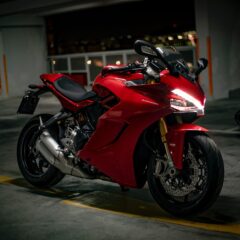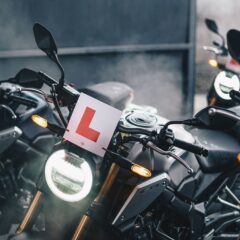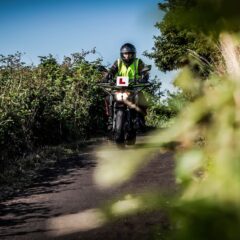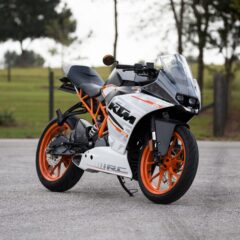
7 Top Motorcycle Accessories
With Christmas just around the corner, you might be wondering what to get your favourite motorcycle enthusiast or even a little something for yoursel...
 Phoenix Motorcycle Training LTD
Phoenix Motorcycle Training LTD
 Phoenix Motorcycle Training LTD
Phoenix Motorcycle Training LTD

Getting a UK motorcycle license requires passing a Theory Test and then taking a practical exam. But before all that, you’ll need to get your CBT certificate (DL196) and display an official learner plate while you practice for your full licence. That motorcycle L plate has specific rules that go with it.
Once you pass your CBT certificate with a qualified instructor, you’ll need to buy some L plates for your motorcycle. Below is an overview of what you need to know. We’ve got you covered with everything about displaying learner plates to keep you safe and on the right side of the law!
A motorcycle L plate—or learner plate—is a square sign that has “L” printed in a large red letter placed on a white background. If you’re in Wales, that red “L” can be replaced with a red “D”. The “D” stands for dysgwr in Welsh. That means (you guessed it!) learner.
Motorcycle L plates have to be displayed on all two-wheeled vehicles ridden by learner riders in the UK. The plate needs to be visible from both directions so other drivers can easily spot you on the road. It is important to note that while some countries use green, yellow or other signs, in the UK learner plates must be red and white.
There’s a bit more to using L plates than buying them and sticking them to each end of your motorcycle. There are some specific rules that apply when riding with a motorcycle L plate, including:
If you’re learning to ride a motorcycle in the UK, showing your motorcycle L plate is essential. After passing your Compulsory Basic Training (CBT), you’ll have to display a motorcycle L plate on the front and back of your motorcycle while riding it. This lets other people know that you are a learner and are continuing to practice your motorcycling skills.
Your motorcycle L plate must be easily visible from at least 45 metres away, with a red L on a white background. The size of L plates matters too. Motorcycle L plates must be 178mm (roughly 7 inches) high and wide. No additional letters or numbers should be shown on the motorcycle L plate, otherwise, it will be considered invalid.
Knowing how to display motorcycle L plates correctly on your motorcycle is essential. The most common way of displaying L plates is to attach them at the front and back of your motorcycle, just above your wheels. Position them in a way that doesn’t interfere with any other objects, like luggage or your number plate!
Using cable ties will ensure they don’t become loose while driving. It helps to remember to add an extra synthetic material layer between the plate itself and any metal elements. This stops any damage caused by vibration from the motorcycle ride.
Following these easy steps will help you display L plates safely and ride with confidence. Once you pass your full motorcycle test, you can remove your motorcycle L plate.
The UK isn’t alone in requiring learner riders to display L plates when they ride. Other countries do too, but often with slightly different rules.
Sure, they might be part of the UK, but Northern Ireland does things a little differently. If you ride with a CBT certificate there, you’ll need to display an L plate on your motorcycle, the same as in England, Scotland and Wales.
Once you pass your full motorcycle licence, you’ll still need to display plates. The only difference is, the letter changes from a red L for learner to an orange R for restricted.
Across the channel in Italy, learner riders display a red ‘P’ plate for the first year of riding and then a green ‘P’ for the following two years. The ‘P’ stands for principiante which, of course, means learner.
On the other side of the world, things are done a little differently again. New riders and drivers still have to display L plates, but theirs have a black ‘L’ on a yellow background.
Our Spanish friends switch things up again with their L plate rules. Learner riders must display their plates before they gain their full licence and also for a year after gaining their licence. Before passing the licence test, learner plates are blue and white, after, they’re green with a white L.
Riding with an L plate comes with its own set of rules and regulations for each part of the world. It’s important to follow the rules carefully, wherever you are, if you want to avoid being fined for non-compliance. By familiarizing yourself with these rules beforehand, you will get one step closer to obtaining your full motorcycle license, without any issues. Good luck!

With Christmas just around the corner, you might be wondering what to get your favourite motorcycle enthusiast or even a little something for yoursel...

If you love motorcycle riding, you’ve probably daydreamed about riding a motorbike for a living. A professional racer or stunt rider is OK for some...

Getting a UK motorcycle licence can seem a complicated process. Particularly when compared to a driving licence for a car. Whether you choose the pro...
This website uses cookies to personalise content, ads, and analyse traffic, sharing data with partners who may combine it with other information. See our Privacy Policy for more information.